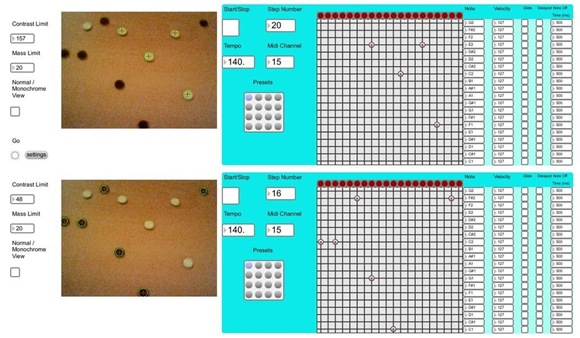
The translation of music from something largely invisible to a physical object is oddly beautiful, even when imperfect. That’s part of why we’re working on the Tangible Interface Hackday – less than 48 hours away now.
Here are a couple of additional sources of inspiration as we prepare.
At bottom, Guy John has made a sequencer out of one of the world’s most ancient games, Go. Over two millenia ago, Chinese people were passing the hours playing this game, so it’s an incredible way of connecting our passtimes today with the leisure time of our ancient ancestors – and a sign that gaming is a part of culture that endures. It’s fitting, too, as a lot of computer musical interfaces can be thought of as games. This particular game uses Max/MSP/Jitter and the CV Jitter externals for image analysis, then translates the game into a grid. Guy’s idea is fairly early in development, so I actually think you could go all sorts of different directions with this basic concept. (As seen in Hack a Day at the end of last year.)
At top, the Graphite Sequencer translates optical images made in the electricity-conducting material to sound in a simple turntable. It’s lovely seeing these patterns as sound objects, especially since usually we go the other way (trying to find patterns to affix to sounds). The same basic graphite-conducting process is used in the business card PAiA kit we showed at a past Handmade Music, as well as the Drawdio pencil (based on the same circuit).
Graphite Sequencer (2006), as seen recently via the blog of the fabulous-looking Montreal Elektra Festival
I’d love to see people continue to combine these fairly basic analog-style techniques – or thousands-year-old games – with the newer digital approach. Let us know what you come up with, creative folk.
